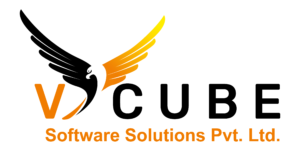PYTHON INTERVIEW QUESTIONS PART-1
Interview Questions
1. What exactly is Python? What are the advantages of Python?
- Python is a programming language that features objects, modules, threads, exceptions, and automatic memory management. Python has the advantages of being simple and easy to use, portable, extendable, with a built-in data structure, and open source.
2. What is the difference between pickling and unpickling?
- The Pickle module takes any Python object and converts it to a string representation, which it then dumps into a file using the dump method. Unpickling is the process of recovering original Python objects from a stored text representation.
3. What is the Python interpreter?
- Python is an interpreted programming language. The Python source code is used to run the program. It translates the programmer’s source code into an intermediate language, which is then translated into machine language, which must be executed.
4. In Python, how is memory managed?
- Python’s private heap space is in charge of memory management. A private heap holds all Python objects and data structures. The programmer does not have access to this private heap, which is managed by the Python interpreter. Python memory manager manages the allocation of heap space for Python objects. The core API allows programmers access to some programming tools. Python also has a built-in garbage collector that recycles all unused memory, freeing it and making it available to heap space.
5. What are some of the bug-finding and static-analysis technologies available?
- Py Checker is a static code analysis tool that finds defects in Python source code and issues warnings about the bug’s style and complexity. Pylint is another tool that checks if a module complies with the coding standard.
6. What are decorators in Python?
- A Python decorator is a tweak to the Python syntax that allows us to quickly change functions.
7. How do you distinguish between a list and a tuple?
- The difference between a list and a tuple is that a list can be mutated, whereas a tuple cannot. Tuple can be hashed as a key for dictionaries, for example.
8. What are the built-in types provided by Python?
- Built-in types that can be changed
List \Sets \Dictionaries
Built-in kinds that can’t be changed
Strings \Tuples \Number
9. What is the difference between passing arguments by value and passing them by reference?
- In Python, everything is an object, and all variables are references to objects. The values of the references are determined by the functions; as a result, you cannot change their value. If the item is modifiable, though, you can change it.
10. In Python, what is a namespace?
- Every name that is added in Python has a home and can be hooked for. This is referred to as a namespace. It’s similar to a box in which a variable name is mapped to the object. This box will be searched whenever the variable is searched for to find the related item.
11. What is a lambda expression in Python?
- Anonymous function is another name for it. It’s a single-expression anonymous function that’s frequently utilized inline.
12. Why are there no statements in lambda forms in Python?
- In Python, a lambda form has no statements since it is used to create new function objects and then return them at runtime.
13. What is slicing in Python?
- Slicing is a mechanism for selecting a range of items from sequence types such as lists, tuples, strings, and so on.
14. In Python, what are generators?
- Generators are a method of implementing iterators. It’s a regular function with the exception that it returns an expression in the function.
15. What are the four advantages of using Python?
- a). Python has a large standard library for most Internet platforms, such as Email, HTML, and so on.
b) Python does not require manual memory management because the interpreter automatically allocates and frees memory for new variables. The usage of square brackets makes it easier to read.
c) Beginners will find it simple to pick up.
d) The built-in data types reduce programming time and effort by eliminating the need to declare variables.
Upskill & Reskill For Your Future With Our Software Courses
Best Python Institute In Hyderabad

Quick Links
- Home
- About Us
- Courses
- Contact Us
Other Pages
Contact Info
- 2nd Floor Above Raymond’s Clothing Store KPHB, Phase-1, Kukatpally, Hyderabad
- +91 7675070124, +91 9059456742
- contact@vcubegroup.com
